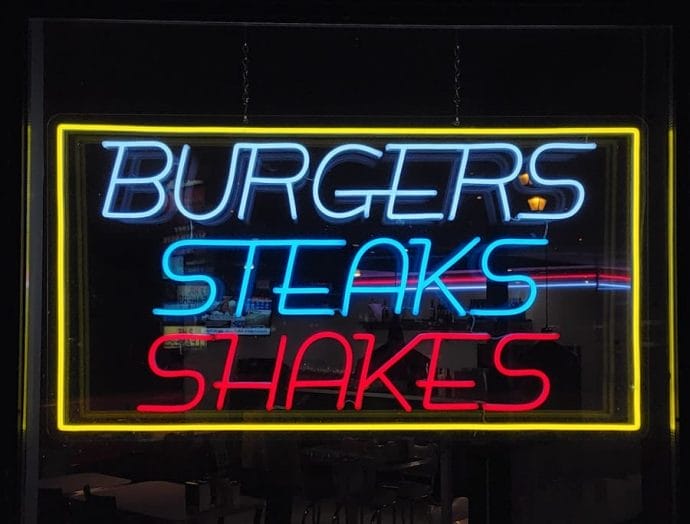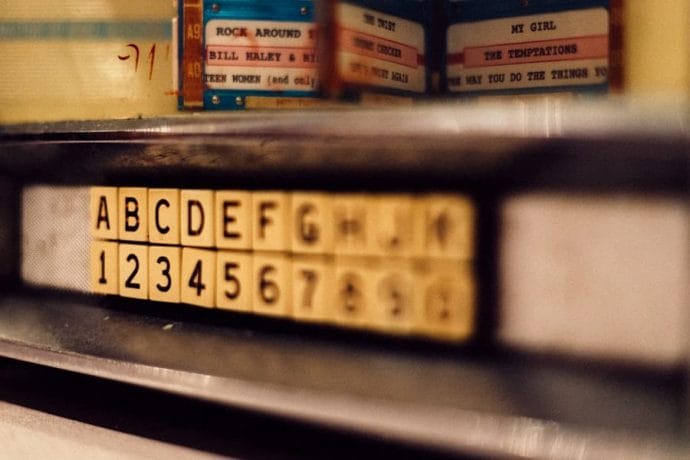Reviving Retro: Embracing Vintage Style
In recent years, there has been a remarkable resurgence of interest in vintage style, a trend that transcends mere nostalgia and taps into a deeper appreciation for the aesthetics and craftsmanship of bygone eras. This revival is not just about wearing clothes that are decades old; it is a celebration of the unique character and individuality that vintage fashion embodies. As contemporary society becomes increasingly aware of the environmental impact of fast Fashion, many individuals are turning to vintage clothing as a sustainable alternative.
By embracing vintage style, people are not only making a fashion statement but also contributing to a more sustainable future by reducing waste and promoting the reuse of garments. The allure of vintage fashion lies in its ability to tell stories and evoke emotions. Each piece carries with it a history, a narrative that connects the wearer to the past.
Whether it’s a 1950s swing dress or a pair of 1970s bell-bottom jeans, vintage clothing offers a sense of authenticity that mass-produced items often lack. This connection to history allows individuals to express their personal style in a way that feels genuine and unique. As we delve deeper into the world of vintage fashion, we uncover a rich tapestry of trends, styles, and influences that continue to inspire modern designers and fashion enthusiasts alike.
Key Takeaways
- Embracing vintage style is about celebrating the timeless appeal of fashion from the past and incorporating it into modern wardrobes.
- Vintage fashion trends include elements from different eras, such as the 1920s flapper style, 1950s rockabilly, and 1970s bohemian chic.
- Tips for incorporating vintage style into your wardrobe include mixing vintage pieces with modern items, accessorizing with vintage-inspired jewelry, and experimenting with different eras.
- Vintage-inspired clothing and accessories can be found in thrift stores, vintage boutiques, online vintage shops, and even in your own family’s closets.
- Embracing vintage style in the modern world allows individuals to express their unique fashion sense while paying homage to the creativity and craftsmanship of the past.
Exploring Vintage Fashion Trends
The Evolution of Fashion Through the Decades
The 1920s, for instance, marked the emergence of flapper dresses, characterized by their loose silhouettes and intricate beadwork, which symbolized a newfound freedom for women. The 1950s brought about the iconic hourglass figure, celebrated through fitted bodices and full skirts that exuded femininity and elegance. Meanwhile, the 1970s introduced bohemian styles, featuring flowing fabrics, bold patterns, and an overall sense of carefree spirit.
Vintage Inspiration in Contemporary Fashion
Designers today often draw upon the aesthetics of previous decades, reinterpreting them through modern lenses. For example, the resurgence of high-waisted jeans and oversized blazers in recent years can be traced back to styles popularized in the 1980s and 1990s. This cyclical nature of fashion allows vintage trends to remain relevant, as they are continuously reimagined to fit current tastes while retaining their original charm.
The Enduring Appeal of Vintage Fashion
The interplay between past and present creates a dynamic dialogue within the fashion industry, encouraging individuals to explore their own interpretations of vintage style. As we explore these vintage trends, it becomes evident that they are not merely relics of the past but rather sources of inspiration for contemporary fashion.
Tips for Incorporating Vintage Style into Your Wardrobe

Incorporating vintage style into your wardrobe can be an exciting journey that allows for personal expression and creativity. One effective approach is to start with statement pieces that can serve as focal points in your outfits. For instance, a classic vintage leather jacket or a retro floral dress can instantly elevate your look and add character to even the simplest ensembles.
Pairing these standout items with modern basics creates a balanced aesthetic that feels both fresh and timeless. Additionally, layering is a key technique in achieving a vintage-inspired look; combining different textures and patterns can evoke the eclectic spirit of past decades while showcasing your unique style. Another essential tip for embracing vintage style is to pay attention to accessories.
Vintage jewelry, handbags, and shoes can transform an outfit and provide that authentic touch that sets it apart from contemporary looks. Consider investing in unique pieces such as brooches from the 1960s or statement earrings from the 1980s; these items not only enhance your outfit but also serve as conversation starters. Furthermore, don’t shy away from mixing different eras; combining elements from various decades can create an intriguing visual narrative that reflects your personality.
Ultimately, the key to successfully incorporating vintage style lies in confidence—wear what resonates with you and allows you to express your individuality.
Where to Find Vintage-Inspired Clothing and Accessories
| Store Name | Location | Website |
|---|---|---|
| Retrolicious | New York, NY | www.retrolicious.com |
| ModCloth | San Francisco, CA | www.modcloth.com |
| Unique Vintage | Burbank, CA | www.unique-vintage.com |
| Beyond Retro | London, UK | www.beyondretro.com |
Finding vintage-inspired clothing and accessories can be an adventure in itself, as there are numerous avenues to explore when seeking out unique pieces. Thrift stores and consignment shops are treasure troves for those on the hunt for authentic vintage items at affordable prices. These establishments often carry a wide range of clothing from various eras, allowing shoppers to sift through racks filled with hidden gems waiting to be discovered.
Additionally, estate sales and flea markets can yield remarkable finds, offering everything from vintage dresses to retro home decor. The thrill of uncovering a one-of-a-kind piece adds an element of excitement to the shopping experience. For those who prefer the convenience of online shopping, numerous websites specialize in vintage-inspired clothing and accessories.
Platforms like Etsy feature independent sellers who create modern pieces inspired by vintage designs, while sites like Depop and Poshmark allow users to buy and sell second-hand items directly from one another. These online marketplaces provide access to a global selection of vintage-inspired fashion, making it easier than ever to curate a wardrobe that reflects your personal style. Additionally, many contemporary brands have begun incorporating vintage elements into their collections, offering modern interpretations of classic styles that appeal to today’s fashion-conscious consumers.
Embracing Vintage Style in the Modern World
Embracing vintage style in today’s fast-paced world can be both liberating and empowering. As individuals seek authenticity in their lives, vintage fashion offers an opportunity to break free from the constraints of mass-produced clothing that often prioritizes trends over individuality. Wearing vintage pieces allows people to stand out in a crowd while celebrating their unique tastes and preferences.
Moreover, this embrace of vintage style fosters a sense of community among like-minded individuals who appreciate the artistry and craftsmanship behind each garment. In addition to personal expression, embracing vintage style also aligns with broader cultural movements advocating for sustainability and ethical consumption. As awareness grows regarding the environmental impact of fast fashion—characterized by its rapid production cycles and disposable nature—many consumers are turning towards vintage clothing as a more responsible choice.
By choosing pre-loved garments over new ones, individuals contribute to reducing waste while supporting local businesses and artisans who prioritize quality over quantity. This shift towards sustainable fashion not only benefits the planet but also encourages a more thoughtful approach to personal style.
The Influence of Vintage Fashion on Contemporary Design

The Enduring Impact of Vintage Fashion
The influence of vintage fashion on contemporary design is profound and multifaceted, shaping trends across various sectors within the industry. Designers frequently draw inspiration from past styles, reinterpreting them through modern techniques and materials to create fresh yet nostalgic collections. This blending of old and new results in innovative designs that resonate with consumers seeking both familiarity and novelty in their wardrobes.
Vintage Elements in Modern Design
For instance, many high-fashion runways have showcased collections featuring elements reminiscent of 1970s boho-chic or 1990s grunge aesthetics, demonstrating how vintage influences continue to permeate contemporary design. Moreover, this influence extends beyond clothing into accessories, footwear, and even home decor. Brands are increasingly incorporating retro elements into their products, appealing to consumers’ desires for authenticity and uniqueness.
The Revival of Classic Silhouettes
The revival of classic silhouettes—such as oversized blazers or high-waisted trousers—reflects a collective yearning for styles that evoke comfort and nostalgia while remaining relevant in today’s fashion landscape. As designers continue to explore the rich history of fashion, they breathe new life into vintage styles, ensuring that their timeless appeal endures for generations to come.
A Timeless Legacy
The enduring influence of vintage fashion on contemporary design is a testament to the power of nostalgia and the human desire for connection to the past. As the fashion industry continues to evolve, it is likely that vintage elements will remain a staple of modern design, inspiring new generations of designers and consumers alike.
Embracing the Timeless Appeal of Vintage Style
In conclusion, embracing vintage style is more than just a trend; it is a celebration of individuality, creativity, and sustainability in an ever-evolving fashion landscape. The allure of vintage clothing lies in its ability to connect us with history while allowing us to express our unique identities through personal style choices. As we navigate the complexities of modern life—marked by rapid change and fleeting trends—vintage fashion offers a refreshing alternative that prioritizes authenticity over conformity.
As we continue to witness the revival of retro aesthetics across various facets of society, it becomes clear that vintage style is here to stay. By incorporating elements from past decades into our wardrobes and supporting sustainable practices within the fashion industry, we contribute to a movement that values quality over quantity and celebrates the timeless appeal of vintage design. Ultimately, embracing vintage style invites us all to reflect on our personal narratives while fostering connections with others who share our appreciation for the beauty found in history’s treasures.
If you’re interested in exploring the timeless appeal of retro style, you might find the article “The Evolution of the Fashionista: From Audrey Hepburn to Rihanna” particularly enlightening. This piece delves into how iconic figures have influenced fashion trends through the decades, embodying the essence of their eras while also bringing classic elements into modern styles. You can read more about how these fashion icons have seamlessly blended retro influences with contemporary fashion by visiting The Evolution of the Fashionista: From Audrey Hepburn to Rihanna.
FAQs
What is retro style?
Retro style refers to a fashion, design, or culture that is reminiscent of trends from the past, particularly from the 1960s to the 1990s.
What are some common elements of retro style?
Common elements of retro style include bold colors, geometric patterns, vintage typography, and references to popular culture from past decades.
What are some popular fashion items associated with retro style?
Popular fashion items associated with retro style include high-waisted jeans, A-line skirts, polka dot dresses, cat-eye sunglasses, and platform shoes.
How is retro style different from vintage style?
Retro style refers to new items that are designed to resemble trends from the past, while vintage style refers to authentic items from a specific era that are at least 20 years old.
What are some popular examples of retro style in popular culture?
Popular examples of retro style in popular culture include the resurgence of vinyl records, the use of vintage-inspired fonts in graphic design, and the revival of 1980s and 1990s fashion trends in contemporary clothing lines.
Is retro style still popular today?
Yes, retro style continues to be popular today, with many people embracing the nostalgia and unique aesthetic of past decades in their fashion, home decor, and entertainment choices.



 Previous Post
Previous Post Next Post
Next Post